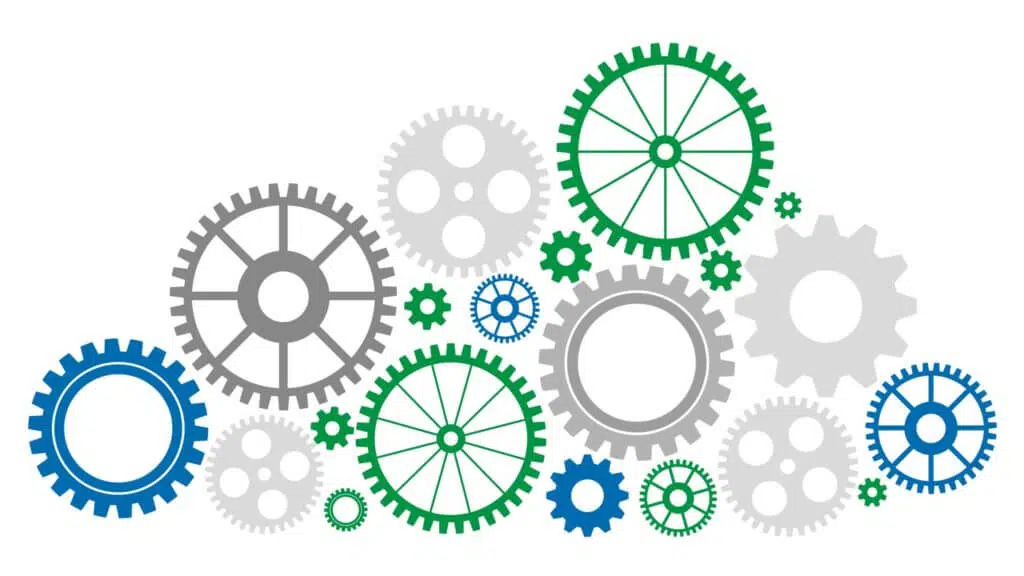Since the digital revolution of the 1980s, we have exponentially developed technology to a point where we can no longer handle the amount of data that we are assaulted with on a daily basis. We do not want faster and stronger, we want smarter and easier. These are the days not of maximising technologies but of simplifying technologies.
It was several years ago, at a Large Herds Conference, that a speaker said we do not need more technology, we need more innovation. By this, he meant that we don’t need more data and we certainly don’t need more reports, what we need is the pinnacle of the mountain, we need easy, simple, decision-making data that is smarter than we are! We need multiple technologies on our farms to generate the data (gigabytes of the stuff each day) but then somebody (or something) to collate it all, intelligently ignore anything that we don’t have to worry about, and produce a tiny subset of the data that we can actually do something with.
STEP BY STEP
The first step is understanding what drives profit in our business. If we can achieve precision in the 20% of things in our business that account for 80% of our profit, then the war is all but won. If it is management of a cheap pasture base, then we need to use innovations that will help us improve on that. If it is heat spotting and artificial insemination success, then we need to be open to using intelligent systems that will remove human error and drive those numbers up. I ask every farmer I meet one question, and no one has yet given me an answer that they have actually calculated for themselves. “What is the cost of one day open on your farm?” There are a number of variables in this equation, but, if we knew the answer, even if we were wildly inaccurate, we would start to think very differently about how we deal with our transition cows in order to increase our fertility parameters. We know from past research that the shape of the lactation curve accounts for 53% of our profit and that reproductive efficiency accounts for another 21%. Add them together and you have almost three quarters of your profit directly influenced by your transition cows. This is what I mean by intelligent information. Data that drives us to do something that we know will help us succeed.
IT’S TIME FOR A CHANGE
There is a catchy line that I abuse: “If you do what you’ve always done, you’ll get what you’ve always got”. Farming in the fourth industrial revolution cannot be done the way you have always done things. It can be far simpler than you think and can change your life for the better. It is time to raise your sights and aim higher than ever before. If you can dream it, a technology probably already exists that can do it. We need to know what we want, open our minds to new possibilities, and start adopting innovations that will improve our lives.
True efficiency
Read full articleOn a recent trip to Wisconsin, I was able to see this awesome ideological system at work, a 220-cow Lely robotic farm, with robotic feed push-up and in- line milk analysis. The farmer runs the dairy with just his teenage son. Each morning as he enters the barn office, his phone pings and shows him some cow numbers. The numbers in red need looking at now, the ones in orange need looking at sometime soon. He had two cows to look at that morning: one had sudden and severe mastitis, the other a slight milk fever, and both were identified, sorted, and treated during the 60 minutes that he was showing me around. This blew me away! There was no rushing about, no last-minute plans being made. This was true dairying efficiency in the flesh! Unfortunately, my example is practically irrelevant to our system in South Africa. We are predominantly a pasture-based dairying economy. The farms that thrive have economies of scale with many hundreds of thousands of cows. Robots are prohibitively expensive for most farmers, and labour is extremely cheap compared to automation. The list goes on …
Irrelevant as it may be, this example shows us, in principle, where this fourth industrial revolution could lead. It shows us the pinnacle of the mountain. How we climb the mountain may be entirely unique to our South African context, but we are perfectly able to take on this task and achieve a similar result.
Alex Jenkins is a technical specialist in the ruminant team at Chemuniqué and holds a master's degree in animal science from the University of KwaZulu-Natal.










